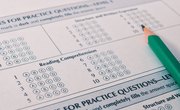Good reading comprehension requires you to focus your attention on understanding the passage. One way to establish a focus is to make a prediction before you dive into the selection, then read to see if your assumptions are accurate. Sometimes people mistakenly presume predictions happen only before you read, but you can also use strategies to clarify your predictions as you acquire new information while working with the text.
Noticing the Text
You start to predict by noticing the title, author and any illustrations, photos or artwork. For example, if you see that the title of a story is “The Black Cat,” you might predict that the story is about a bad luck cat. When you see that the story is by Edgar Allan Poe, you can clarify that prediction because now you know the story is likely in the horror or suspense genre. Then you notice that a picture of the cat includes a man with an ax, and you make an even more specific prediction: The story will feature a man who tries to kill an unlucky black cat.
Prediction Charts
To stay focused, it may help to write down your initial predictions before you start reading. As you get involved with the text, you can start clarifying those predictions using evidence in the story. As a helpful strategy, you may want to make a chart with three columns: one for your original prediction, one for evidence you found that helps you revise or clarify the prediction, and one for the new prediction based on the clues you have found. The chart will give you a permanent record of what was your thinking that led to understanding the text.
Questioning Strategy
Asking yourself engaging questions as a strategy can help you make and clarify predictions as you read. You might start with the question, “What do I expect to read in this passage?” Then follow that up with, “What clues tell me that?” As you read more, you might ask, “Which of my predictions have been correct, and which ones need to be revised?” Then you clarify your predictions. When you are finished reading, you should go back and evaluate all your predictions. If there is more to read, ask, “What’s going to happen next?” to set up further reading.
Checking Predictions
Clarifying predictions requires you to stop and think as you read, which is how making predictions connects to building comprehension. Predictions aren’t wild guesses; they are based on available evidence. Although you clarify predictions as you read, your prediction don’t need to be correct. The author may succeed in fooling you, which makes reading entertaining. However, your comprehension at the end of the story does need to be accurate. As a regular strategy, you should evaluate your predictions after you’ve read. That will help you to see if you were simply fooled by the author, or if you misread the evidence. Make a chart that shows your original predictions, your clarifications and your accuracy to help you analyze your thinking.
Related Articles
References
- Scholastic.com: Reading Clinic: Using Predictions to Help Kids Think Deeply About Texts
- Read Write Think: Using Predictions as a Prereading Strategy
- Learner.org: Make and Refine Predictions
- Teaching Reading in the Middle School; Laura Robb
Writer Bio
David Raudenbush has more than 20 years of experience as a literacy teacher, staff developer and literacy coach. He has written for newspapers, magazines and online publications, and served as the editor of "Golfstyles New Jersey Magazine." Raudenbush holds a bachelor's degree in journalism and a master's degree in education.











